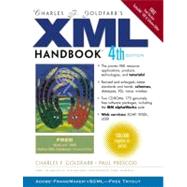
|
xii | ||||
| Preface | xxxviii | ||||
|
|||||
| Foreword | i | ||||
|
|||||
| Prolog | liv | ||||
|
|||||
| Part 1 The Who, What, and Why of XML | 2 | (118) | |||
|
4 | (26) | |||
|
30 | (30) | |||
|
60 | (12) | |||
|
72 | (22) | |||
|
94 | (12) | |||
|
106 | (14) | |||
| Part 2 Three-tier applications | 120 | (44) | |||
|
122 | (12) | |||
|
134 | (18) | |||
|
152 | (12) | |||
| Part 3 E-commerce | 164 | (46) | |||
|
166 | (22) | |||
|
188 | (14) | |||
|
202 | (8) | |||
| Part 4 Integration | 210 | (52) | |||
|
212 | (12) | |||
|
224 | (12) | |||
|
236 | (10) | |||
|
246 | (16) | |||
| Part 5 Content Management | 262 | (60) | |||
|
264 | (10) | |||
|
274 | (22) | |||
|
296 | (12) | |||
|
308 | (14) | |||
| Part 6 Portals | 322 | (52) | |||
|
324 | (12) | |||
|
336 | (12) | |||
|
348 | (10) | |||
|
358 | (16) | |||
| Part 7 Publishing | 374 | (54) | |||
|
376 | (22) | |||
|
398 | (16) | |||
|
414 | (14) | |||
| Part 8 Databases | 428 | (62) | |||
|
430 | (14) | |||
|
444 | (20) | |||
|
464 | (14) | |||
|
478 | (12) | |||
| Part 9 Content Acquisition | 490 | (52) | |||
|
492 | (12) | |||
|
504 | (12) | |||
|
516 | (14) | |||
|
530 | (12) | |||
| Part 10 Schemes and Design | 542 | (46) | |||
|
544 | (14) | |||
|
558 | (12) | |||
|
570 | (8) | |||
|
578 | (10) | |||
| Part 11 Voice | 588 | (24) | |||
|
590 | (10) | |||
|
600 | (12) | |||
| Part 12 Semantic Web | 612 | (56) | |||
|
614 | (14) | |||
|
628 | (18) | |||
|
646 | (10) | |||
|
656 | (12) | |||
| Part 13 Web Services | 668 | (40) | |||
|
670 | (10) | |||
|
680 | (14) | |||
|
694 | (14) | |||
| Part 14 Infrastructure | 708 | (50) | |||
|
710 | (14) | |||
|
724 | (12) | |||
|
736 | (10) | |||
|
746 | (12) | |||
| Part 15 XML Core Tutorials | 758 | (114) | |||
|
760 | (28) | |||
|
788 | (34) | |||
|
822 | (24) | |||
|
846 | (16) | |||
|
862 | (10) | |||
| Part 16 Schema Tutorials | 872 | (66) | |||
|
874 | (14) | |||
|
888 | (30) | |||
|
918 | (20) | |||
| Part 17 Transform & Navigation Tutorials | 938 | (100) | |||
|
940 | (30) | |||
|
970 | (26) | |||
|
996 | (8) | |||
|
1004 | (14) | |||
|
1018 | (20) | |||
| Part 18 Resources | 1038 | (86) | |||
|
1040 | (30) | |||
|
1070 | (32) | |||
|
1102 | (16) | |||
|
1118 | (6) | |||
| Index | 1124 |
The New copy of this book will include any supplemental materials advertised. Please check the title of the book to determine if it should include any access cards, study guides, lab manuals, CDs, etc.
The Used, Rental and eBook copies of this book are not guaranteed to include any supplemental materials. Typically, only the book itself is included. This is true even if the title states it includes any access cards, study guides, lab manuals, CDs, etc.